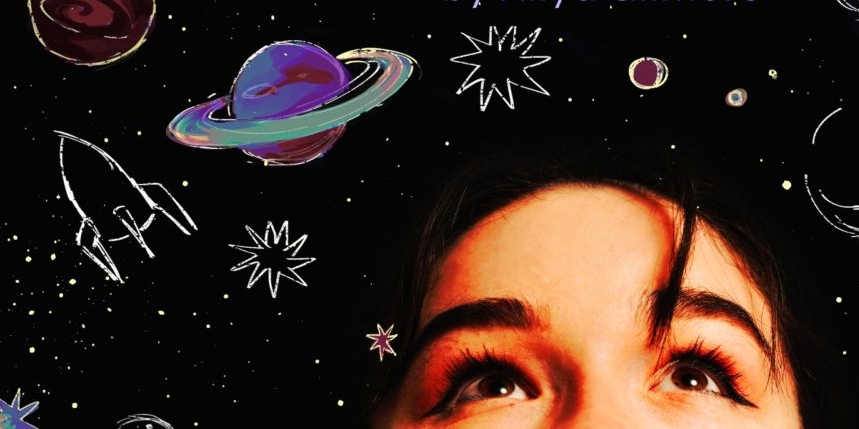The ceiling of the theatre is a universe of stars while two musicians produce techno music from flashing decks. Spluttering radio broadcasts let us know we are in the 1950s. A silhouette looks into a moving picture of the universe.
This is the story, or the imagined emotional life, of Laika the first dog in space. The Soviet Union sent this mongrel to orbit the earth in Sputnik 2 on 3 November 1957, the anniversary of the Bolshevik Revolution.
Laika is played by Iz McGrady, a red boiler-suited figure with her hair in bunches. She radiates doggy enthusiasm for what we know is training for a mission which can only end in her death. She fills the stage with gesture and dance in front of cinema projections. She is fascinated by the lights, and impatient about the food in little vignettes which are suggestive of the innocence of early space exploration.
With dance, music and cinema projection, Ultraviolet Productions impressionistically creates not a description, but a feeling of the relationship between man, dog and technology and perhaps something more. She may be, as has been said about women’s relationship to men, part victim, part accomplice. In Aliya Gilmore’s script, Laika is under the thrall of a controlling man played with studied detachment by Ben Willows, receiving a ‘good girl’ for her obedience. She is petted, trained and sent into space by this calculating master who is her abductor and her only friend.
The script gives character and depth to the dog with myths connected to the heavens and stories such as that of the Doomsday Dog which is chained to the Pole Star. Laika broods on these myths as she languishes in the spaceship with her limited supply of food and air.
Everything works well for a performance piece but the lack of tension, of the traditional plot twists of theatre deprive the presentation of the oxygen of drama, despite the energy of the performers.
Laika is at the Barons Court Theatre from 20 to 24 June

